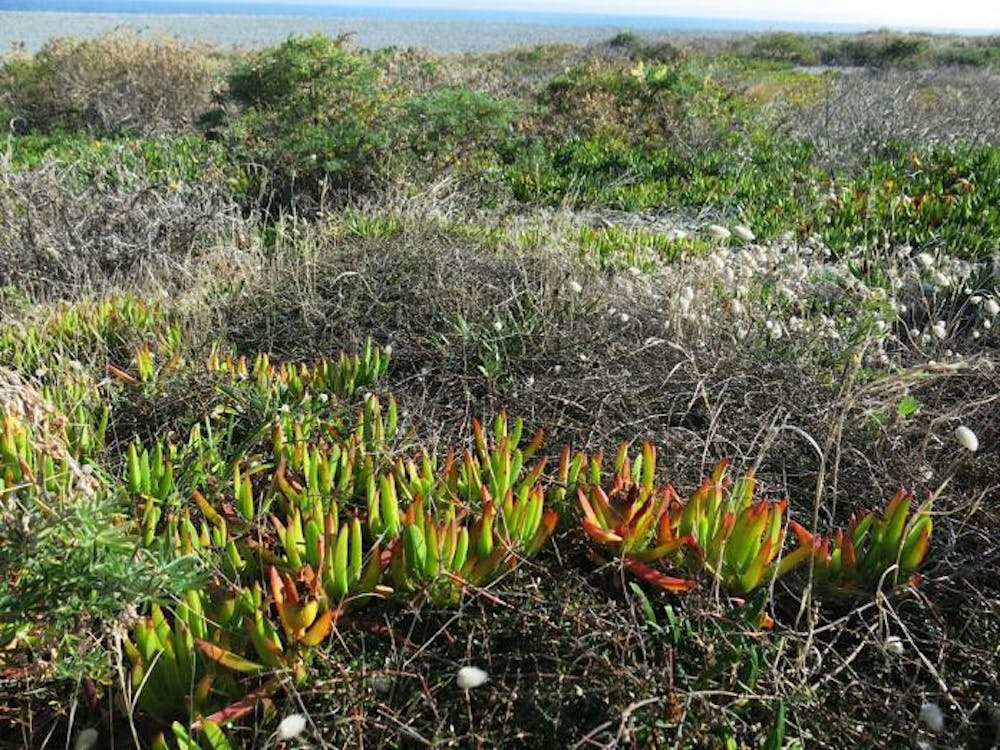Plants from more genetically diverse regions are more likely to become invasive species in new environments, according to a new study conducted by Dov Sax, associate professor of ecology and evolutionary biology, and Jason Fridley, associate professor of biology at Syracuse University. Published Oct. 1 in the journal Global Ecology and Biogeography, the study is the first to explicitly test this idea at a macro level.
Eight years ago, Sax met Fridley at the Ecological Society of America Conference. They realized that they shared a similar frustration: No one had ever explicitly tested Darwin’s theories on invasive species. “Darwin wrote about these ideas more than 150 years ago and various authors had mentioned it in publication … but no one had actually tried to test (them),” Sax said.
Sax and Fridley hypothesized that species from more phylogenetically diverse regions were more likely to successfully become invasive in a new environment. Phylogenetic diversity is a measure of the number of different evolutionary lineages, Sax said. When a plant species spreads to a region where it is not native, the plant can be termed “invasive” and has the potential to cause damage to the indiginous plants, or even cause human health problems.
Since species growing in more diverse areas faced more competition, they are constantly forced to evolve. The traits they acquire over generations allow them to compete better in a new environments, he said.
To test their hypothesis, the researchers looked at various data sets on invasive plants. Since botanists generally group the world into 35 different geographic regions, the researchers used these same regions when looking at plant data, Fridley said. They pulled data from previous research on where various plant families grow and looked at the number of different plant families in each of the regions to estimate their phylogentic diversity, he said.
The ecologists then examined cases that had the potential for invasions to occur, and analyzed how plant diversity impacted the invasions.
One example was when the Suez Canal was built, connecting the Mediterranean Sea to the Red Sea and thus allowing plant life from both areas to mix together.
“The Red Sea was very phylogenetically diverse, while the Mediterranean was not,” Sax said, adding that species of plants more frequently moved from the Red Sea to the Mediterranean than vice versa.
Looking at invasive species from different continents also supported their hypothesis.
“Eastern Asia has the highest phylogenetic diversity in the world, whereas Europe has low phylogenetic diversity,” Fridley said. While one out of four plants from Asia become invasive, only one out of every 10 from Europe follow suit, he said.
The results of the study are a “great tool for thinking about the control and prevention of invasions,” Fridley said. They can be used to regulate species that are introduced into a new area by helping to predict how big of a risk any given species will be, he said.
This information is important for countries with plant invasion problems, such as Autralia and New Zealand, and could affect their policies to prevent invasive species, Sax added.
“It’s a really important paper,” said Laura Meyerson, associate professor of natural resources science at the University of Rhode Island, who was not involved in the study. Previously, there had only been species-specific studies that did not always hold true more generally, she said. Sax and Fridley took a larger-scale approach “by looking at large data sets and trying to pick out patterns.”
Their research “unifies a lot of the hypotheses out there, and helps us understand the patterns that we see,” she said.
With this study complete, Fridley said he hopes to further his work on invasive species. His current research seeks to understand what specific traits of invasive species make them so successful in infiltrating new environments.

ADVERTISEMENT




